Save the bees: how to help grow their numbers
Find out how you can do your bit to help bees with Period Living’s Save the Bees campaign – and get busy planting and bee-spotting

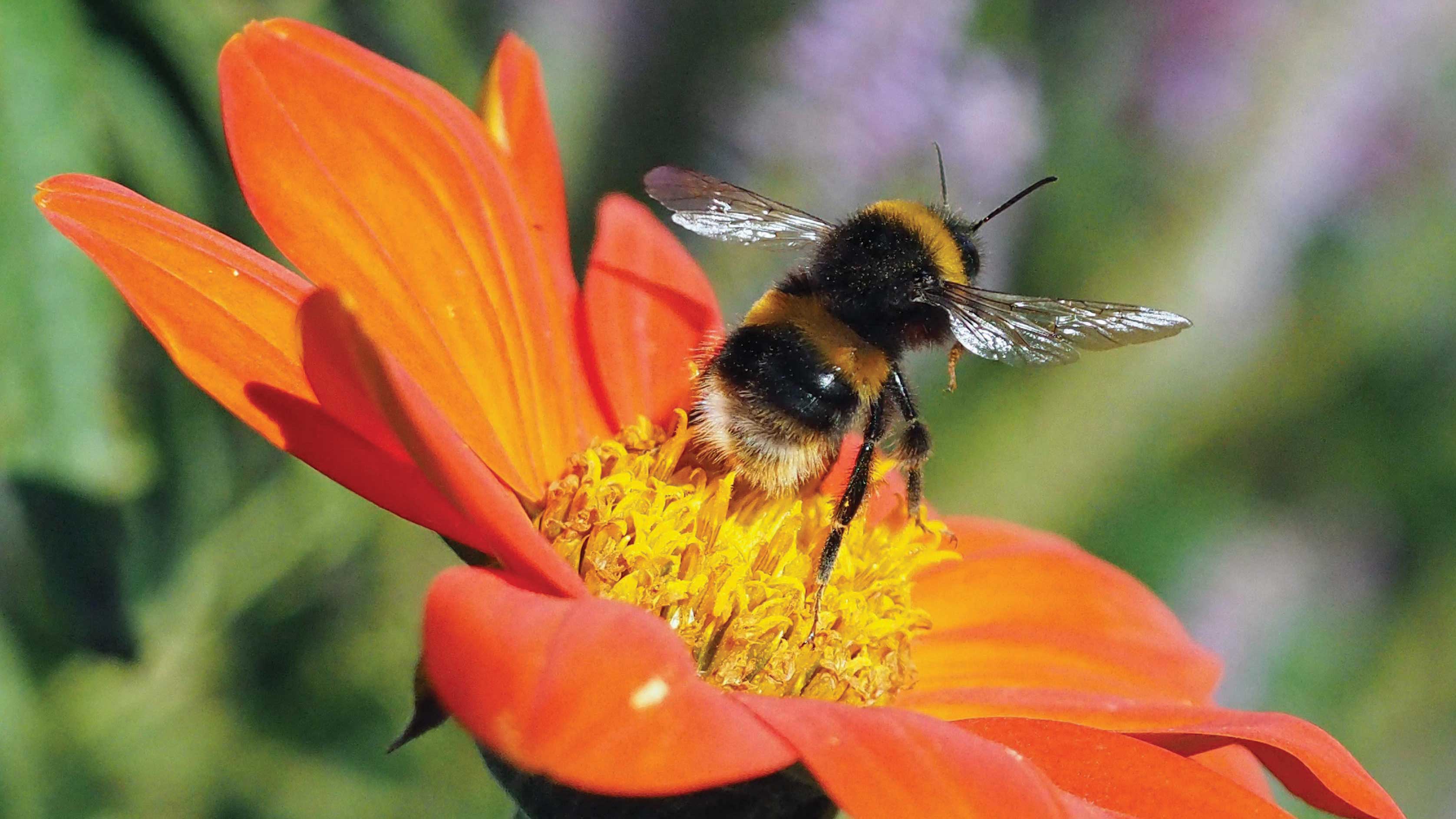
Look out to your garden, and chances are you'll spot at least one bee, buzzing around between flowers as it greedily gathers nectar. Bees are the very foundation of not just our gardens, but of the food that we, and many other creatures, thrive upon. They are the busy workers who pollinate our flowers and crops – and to lose them would be catastrophic.
The fact that bee populations are declining at an alarming rate is not new information, with reports of increases in colony collapses hitting the headlines every year, and theories about the devastating consequences the world will face if the downtrend continues.
An extensive recent study has reported that around a third of native species of bees and hoverflies (another key pollinator) have decreased over the last three decades and are in danger of disappearing. Or, to put it another way, every square kilometre in the UK has lost an average of 11 species of these essential pollinators.
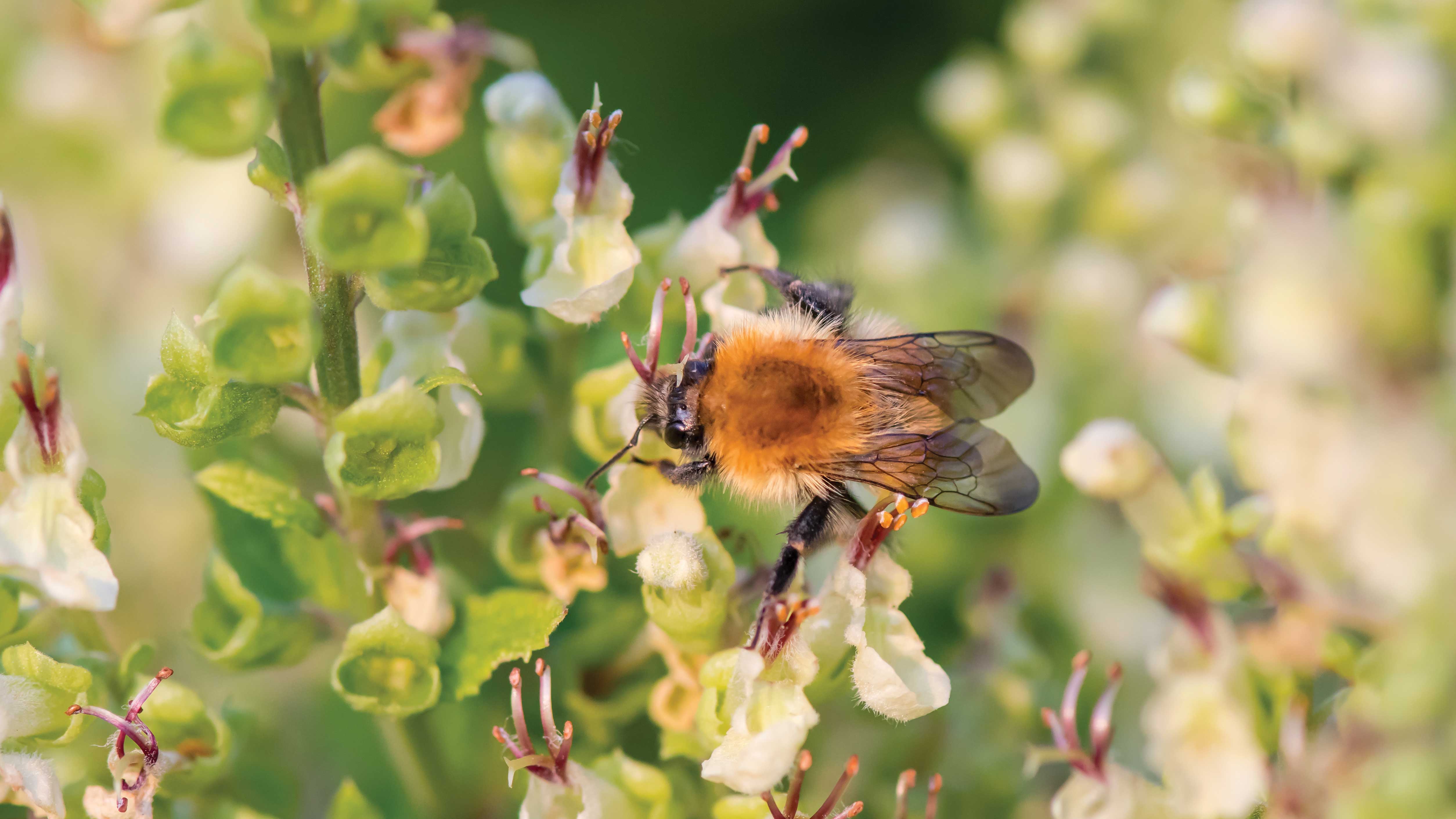
The common carder bee, or Bombus pascuorum, is found in a wide range of habitats across the UK, including gardens
Save the bees with Period Living
Period Living has launched a Save the Bees campaign to help support bees and increase their numbers. The magazine is encouraging people to look to their gardens to plant more bee-friendly flowers, provide homes for them, and reduce the use of harmful pesticides.
To support the campaign, Period Living has teamed up with British homeware designer Sophie Allport and Waitrose to create a special edition gift pack, which goes on sale 25 July 2019, exclusively in Waitrose.
The gift pack contains the latest issue of Period Living along with a Sophie Allport Bees shopper bag, worth £8, and a bee-friendly flowers poster. And 10p from the sale of every issue will go to the Bumblebee Conservation Trust. The value pack also contains two tickets for the Homebuilding & Renovating Show, worth £38, a mini baking recipes book and a home maintenance handbook.
Only a limited number of copies are available, so don't miss out.
Get small space home decor ideas, celeb inspiration, DIY tips and more, straight to your inbox!

Period Living has teamed up with Sophie Allport and Waitrose to offer a special edition of the magazine, which includes a Sophie Allport Bees shopper bag. Only at Waitrose, from 25 July 2019
Why are bees declining?
There are a number of reasons for the decline, including intensive agricultural practices, climate change, pesticides, other invasive species and disease, but one of the biggest issues is the destruction of their natural habitat.
According to the Bumblebee Conservation Trust, the UK has lost a staggering 97 per cent of its wildflower meadows since the 1930s, as sites have been repurposed for farming or building, leaving pollinators with far fewer flowers than they used to have access to.
All this has led to two native bumblebee species becoming extinct and a further eight of our 24 species being endangered. ‘Worryingly, even some of our common species populations have been declining over the past decade,’ says Darryl Cox, senior science and policy officer at the Bumblebee Conservation Trust.
‘Last year in particular was a tough year for them, with the Beast from the East disrupting the start of bumblebee season, followed by the unusual heatwave, which meant much of the nectar needed had dried up.’
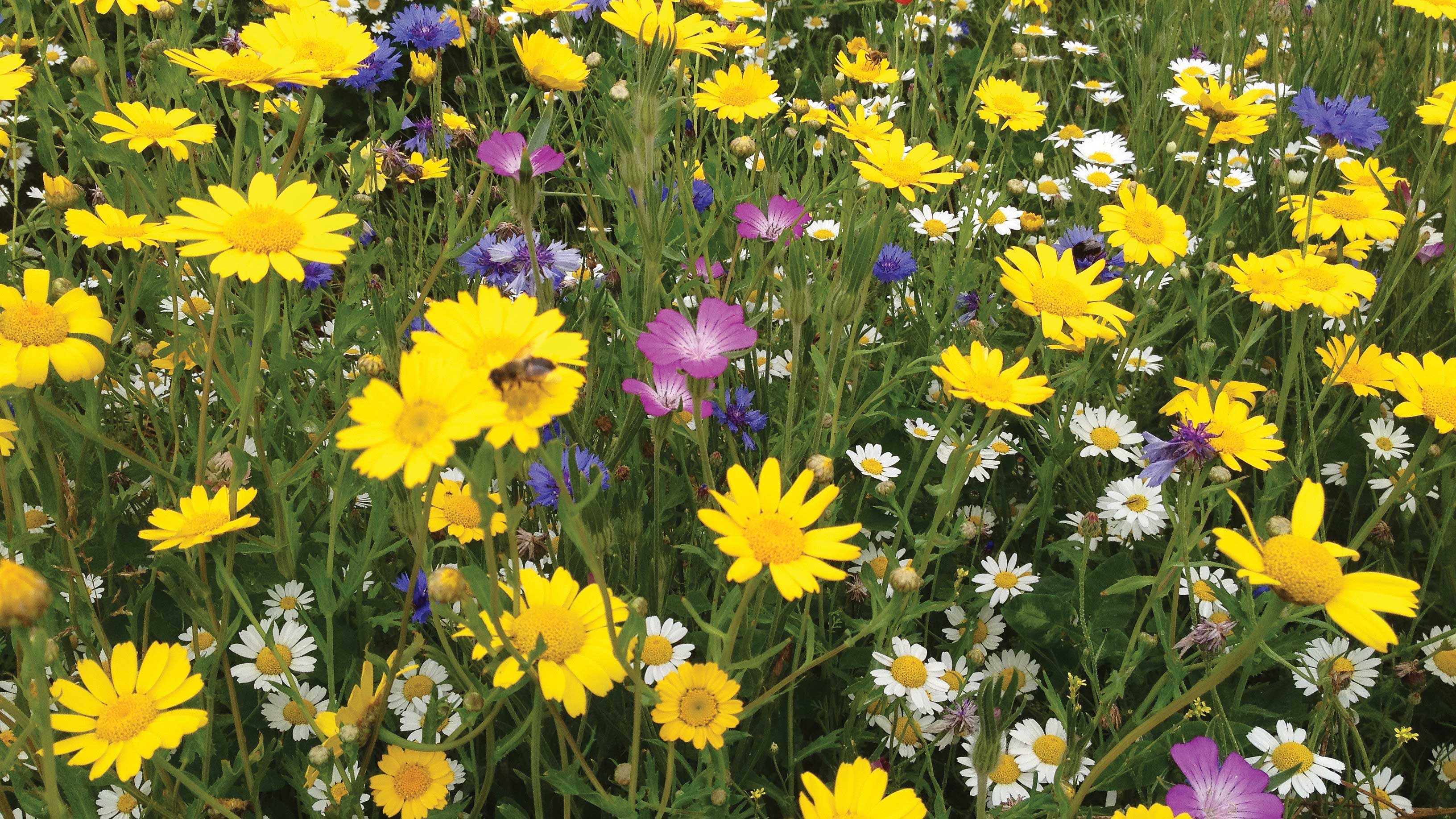
The UK has lost 97 per cent of its wildflower meadows since the 1930s, which means bees have access to a lot less flowers
Do we really need bees?
Bees are responsible for directly pollinating around one third of everything we eat and the flowers of many plants that animals feed on, which makes them one of the most valuable living creatures.
To put their contribution into financial terms, bumblebees alone are estimated to add €14.2 billion annually to the European Union and £600 million to the UK economy.
Pollinating certain crops without their help is time-and money-intensive, and the yield generally less successful. Therefore, in the UK we import hundreds of thousands of commercially farmed bees every year to aid in the task.
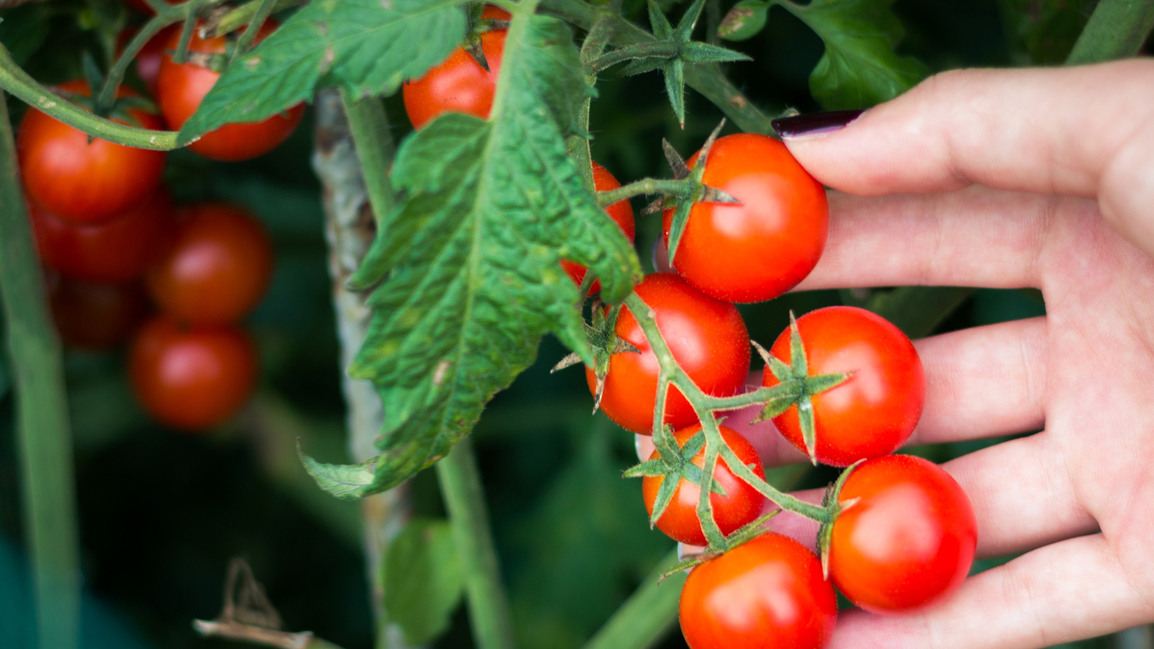
According to the Bumblebee Conservation Trust, almost every tomato you have ever eaten was pollinated by bumblebees
What are the different types of bees?
There is only one type of European honeybee, distinguished by its black slim body with golden-amber stripes. Honeybees have been domesticated for centuries and are rarely found in the wild. In any hive there are up to 40,000 bees of three types: a single queen, thousands of female worker bees and, in the summer, hundreds of male drones, who are evicted in the autumn to die.
Unlike bumblebees, honeybees overwinter as a colony, living off the food stores they produced during the summer. They make far more honey than is needed, and so the excess is taken by beekeepers for human consumption. Female honeybees can sting if they feel threatened, so don’t stand in front of a hive…
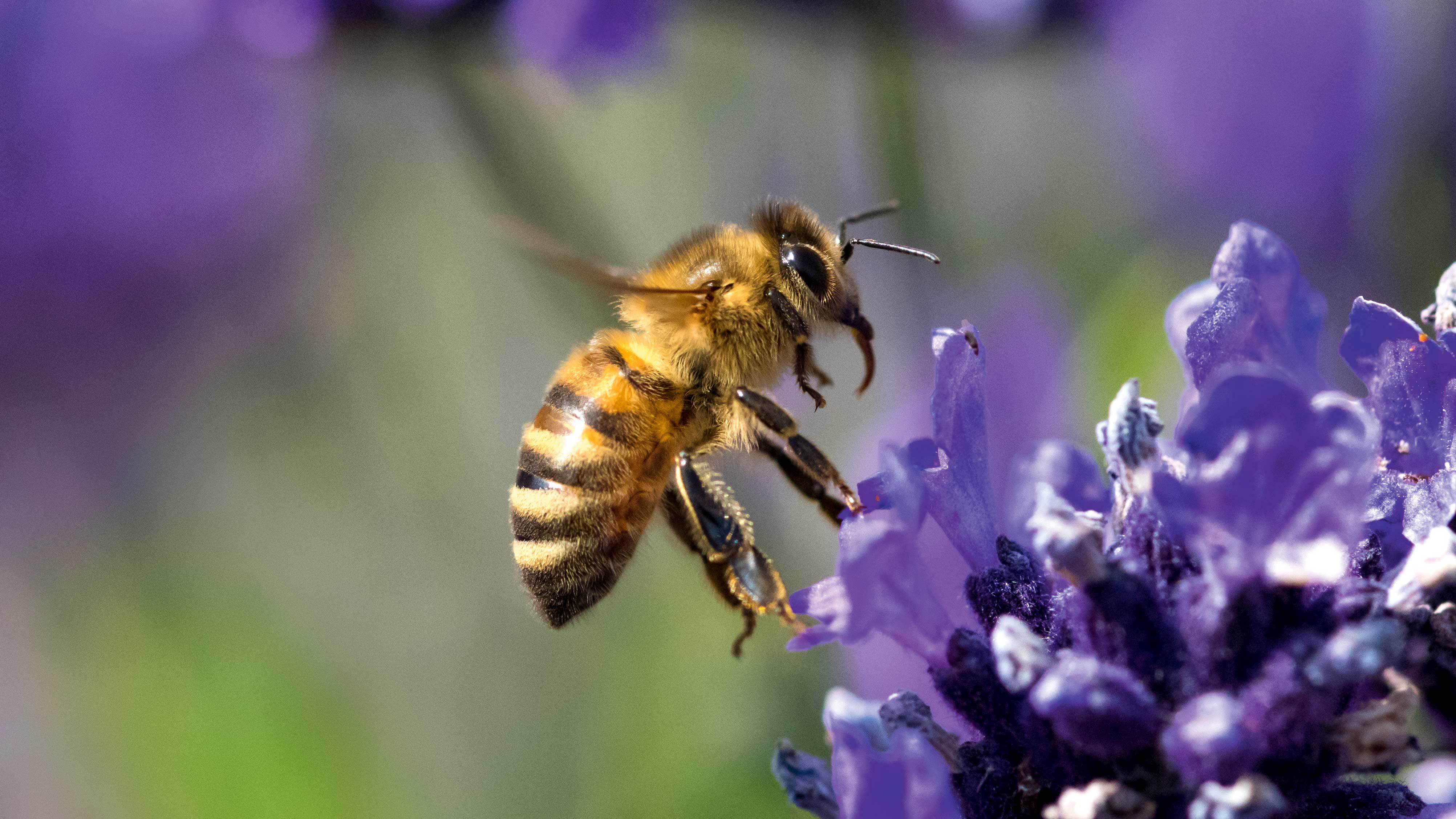
There can be up to 40,000 honeybees in a hive
Rounded, furry and friendly looking, bumblebees don’t make honey as such, but are hugely important pollinators. According to the Bumblebee Conservation Trust, total fruit production is doubled if bumblebees are used as opposed to other pollination interventions, and almost every tomato you have ever eaten was pollinated by them.
There are 24 different types of native bumblebee, and their nests contain up to 400 bees. In gardens, bumblebees tend to nest in relatively undisturbed areas such as shaded corners. Some will also nest under structures such as sheds. Leave the nests alone if possible, as they will die out at the end of summer and rarely sting.
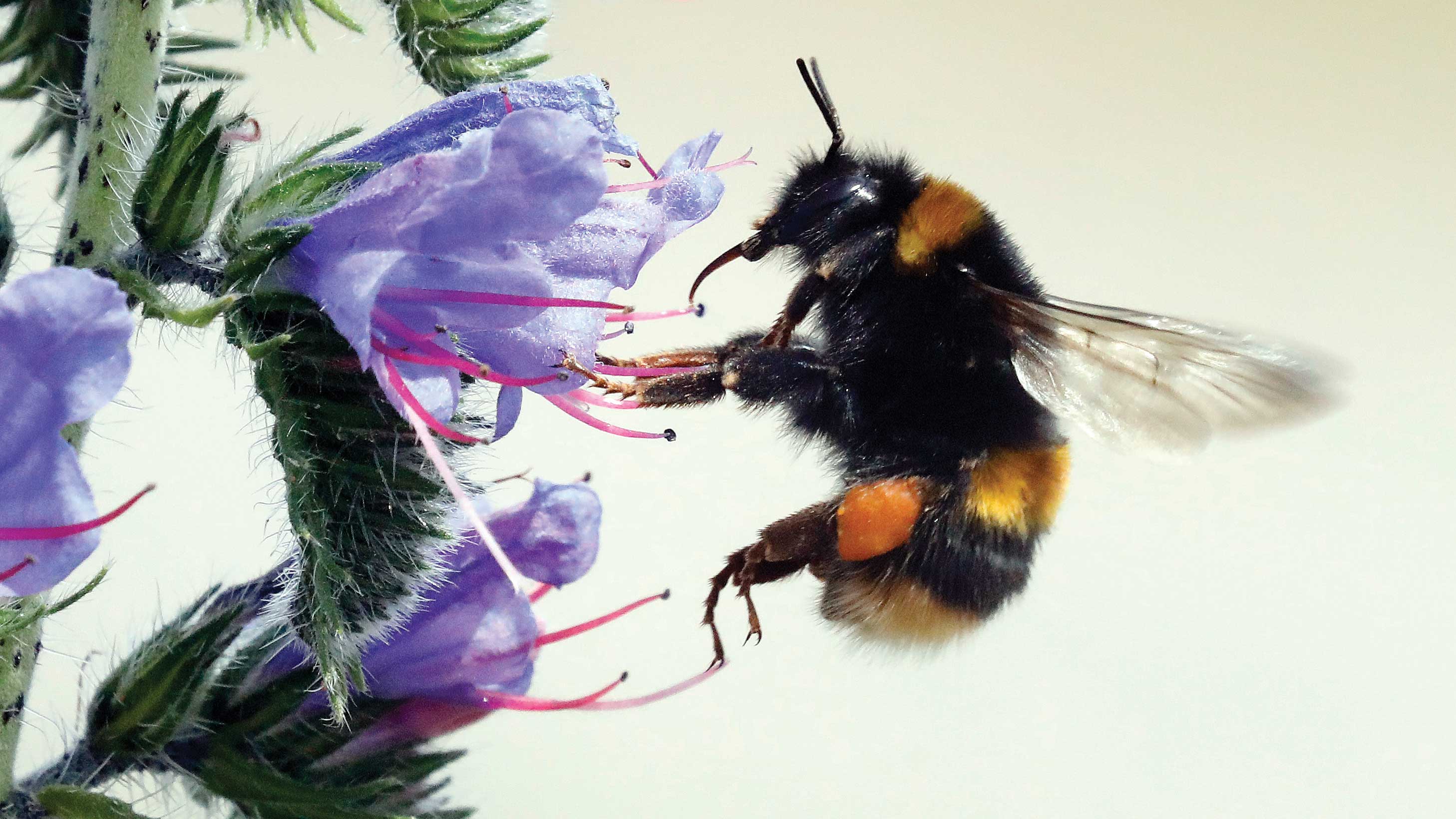
The buff-tailed bumblebee, or bombus terretris, is one of the most common in Europe
There are 225 species of solitary bee in the UK, including the red mason and leaf cutter. As their name suggests, they do not live in colonies, produce honey or have a queen. They tend to be smaller and live in holes in walls or the ground – consider buying a Bee Brick, as shown.
Solitary bees drink nectar directly from the flower and spend most of their time collecting pollen, which is mixed with a small amount of nectar as food for their young. This makes them fantastic pollinators, and more efficient than honeybees. They do not swarm and rarely sting. When they do it is weak as they don’t have a hive and so haven’t evolved this defence. Their numbers decrease over the summer and their nests should be left alone.
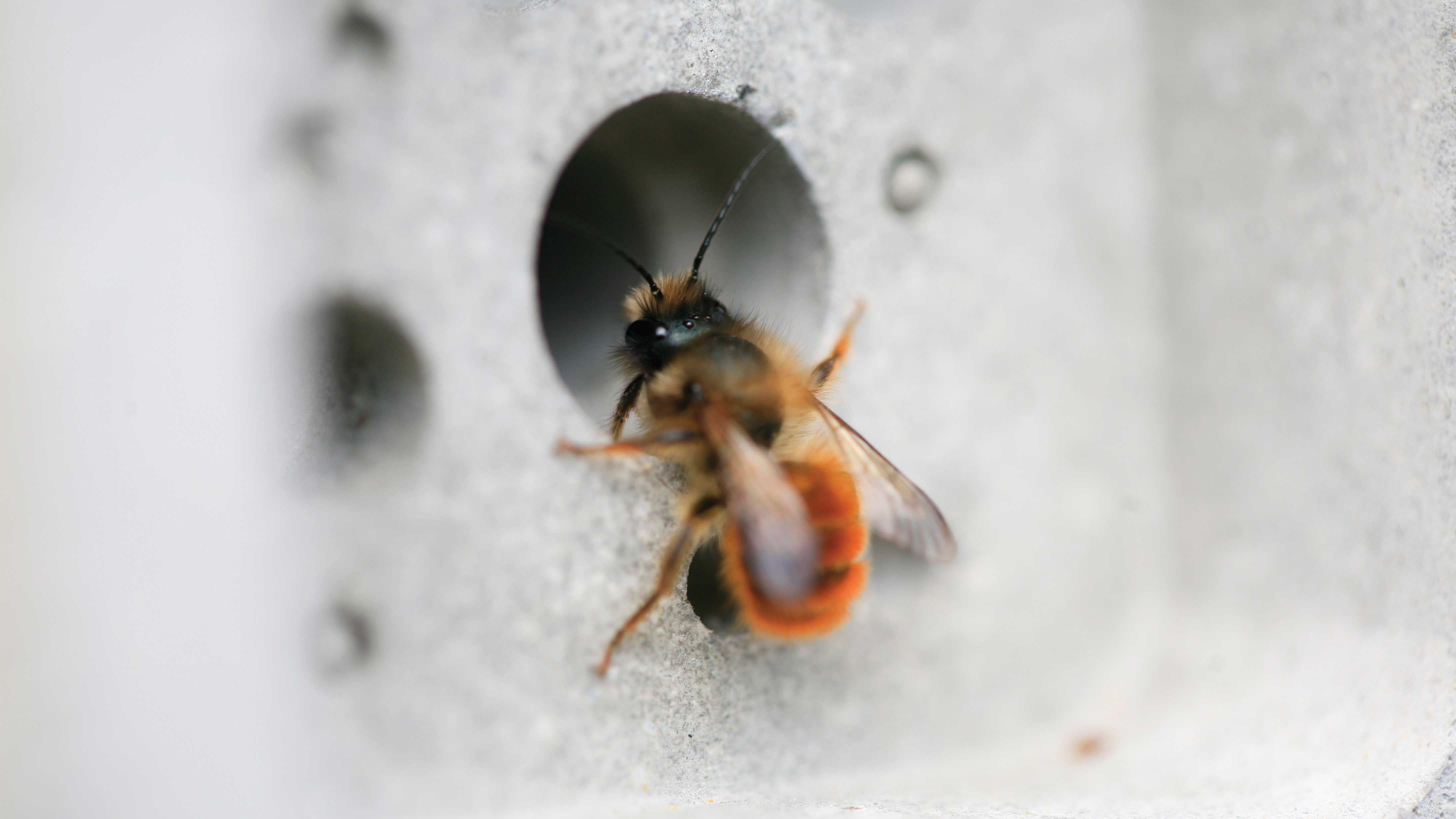
Put in a Bee Block for solitary bees, from €21 at Designist
How can I help the bees?
The first thing you should do is grown more bee-friendly flowers – not only will this provide a valuable food source for them, but it will improve the look of your own garden as a result. ‘You don’t need much space, even a window box or container can help, as long as it has the right kinds of flowers,’ says Darryl.
‘We have developed a useful free educational tool, Bee Kind, to help people make the right choices for bees in their garden. It will tell you how bee-friendly your garden is and provide recommendations to suit your garden’s growing conditions.’
It’s also a good idea to create homes for them – consider making a wooden bee hotel filled with hollow bamboo and reeds, or investing in some bee blocks (masonry blocks with holes) for solitary bees. ‘If you want to encourage bumblebees to nest, try leaving a corner to grow wild or installing a hedgehog box, which is great shared housing used by hedgehogs in winter and bumbles in summer,’ adds Darryl.
In hot, dry weather, don’t forget to provide a place for bees to drink – fill a tray with rainwater and add some large stones for them to perch on.
You should also avoid pesticides and herbicides wherever possible, as they are a major contributing factor to bee decline, and are also not good for the health of people, animals and other beneficial insects. Solutions made with neem oil, and garlic and soap with water are natural alternatives.
‘Possibly the simplest thing you can do to help bees is mow the grass a bit less often,’ says Darryl. ‘Once every three weeks promotes the growth of beneficial weed species like dandelions and clover.’
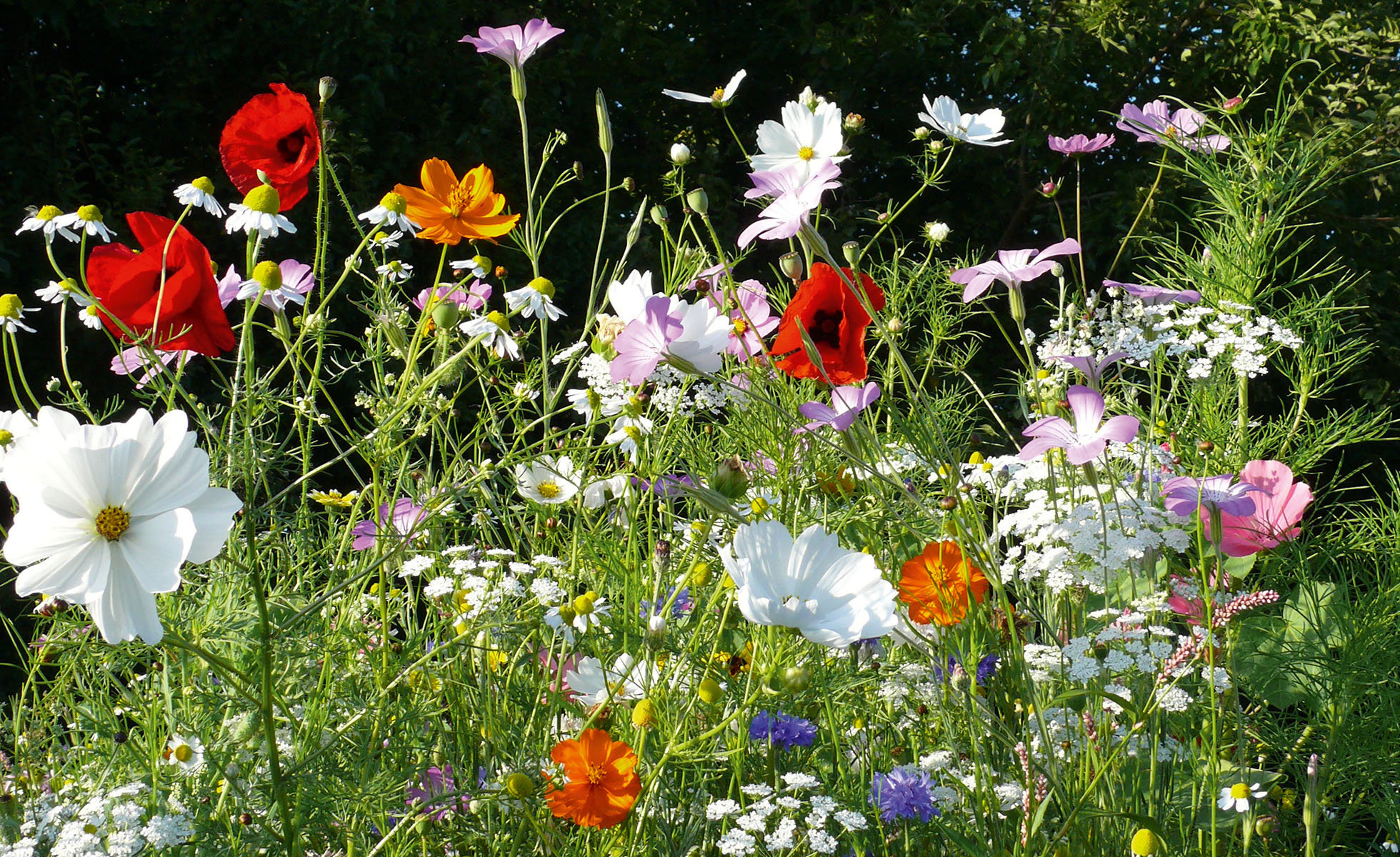
Make space for a meadow area filled with bee-friendly wildflowers
What can I do in autumn and winter?
Bees are winding down at this time of year, but due to climate change, there are often bees seen around well into autumn, and even winter, seeking food. Grow a range of late-flowering nectar plants such as asters, single-flowered dahlias, Japanese anemones, salvias and sedum. You can also plant a wildflower meadow in lighter soils at this time of year, although some seeds will not come up until the following spring.
‘In some areas, particularly in the southern half of the UK, we are seeing winter-active bumblebees, so it is worth having something in flower over the winter months just in case,’ says Darryl.’ Plants like winter-flowering honeysuckle and mahonia are lovely winter additions that can benefit bees. Winter is also a great time to plan your bee-friendly garden improvements for the next year.’
Bear in mind that you can start off a number of spring and summer flowers indoors, ready to plant out next year, and plant spring-flowering bulbs in beds and pots. Crocus, snake’s head fritillary, alliums and grape hyacinth are good for bees.
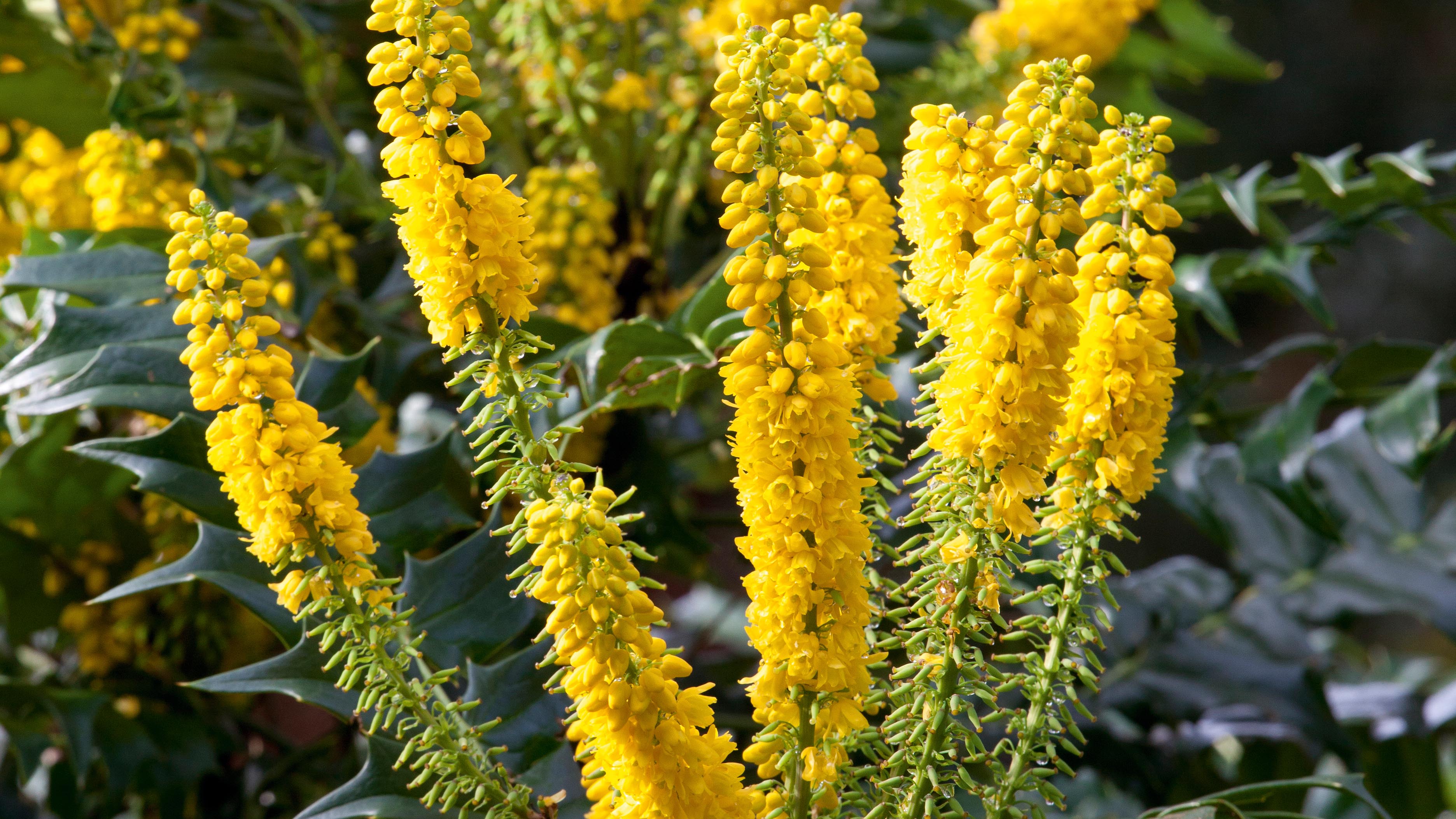
Mahonia is a bee-friendly evergreen shrub, which produces flowers during winter
Will supporting bee charities help?
Outside of gardening, you can support the work of organisations like the Bumblebee Conservation Trust, which is working to reverse bumblebee decline through works such as landscape-scale conservation projects, advising farming practices and creating and restoring wildflower habitats – all of which helps not just bumblebees but other bees and beneficial pollinators.
It also organises BeeWalk surveys, and needs volunteers to walk the same fixed route once a month between March and October, counting the bumblebees seen and identifying them to species and caste (queen, worker, male) where possible.
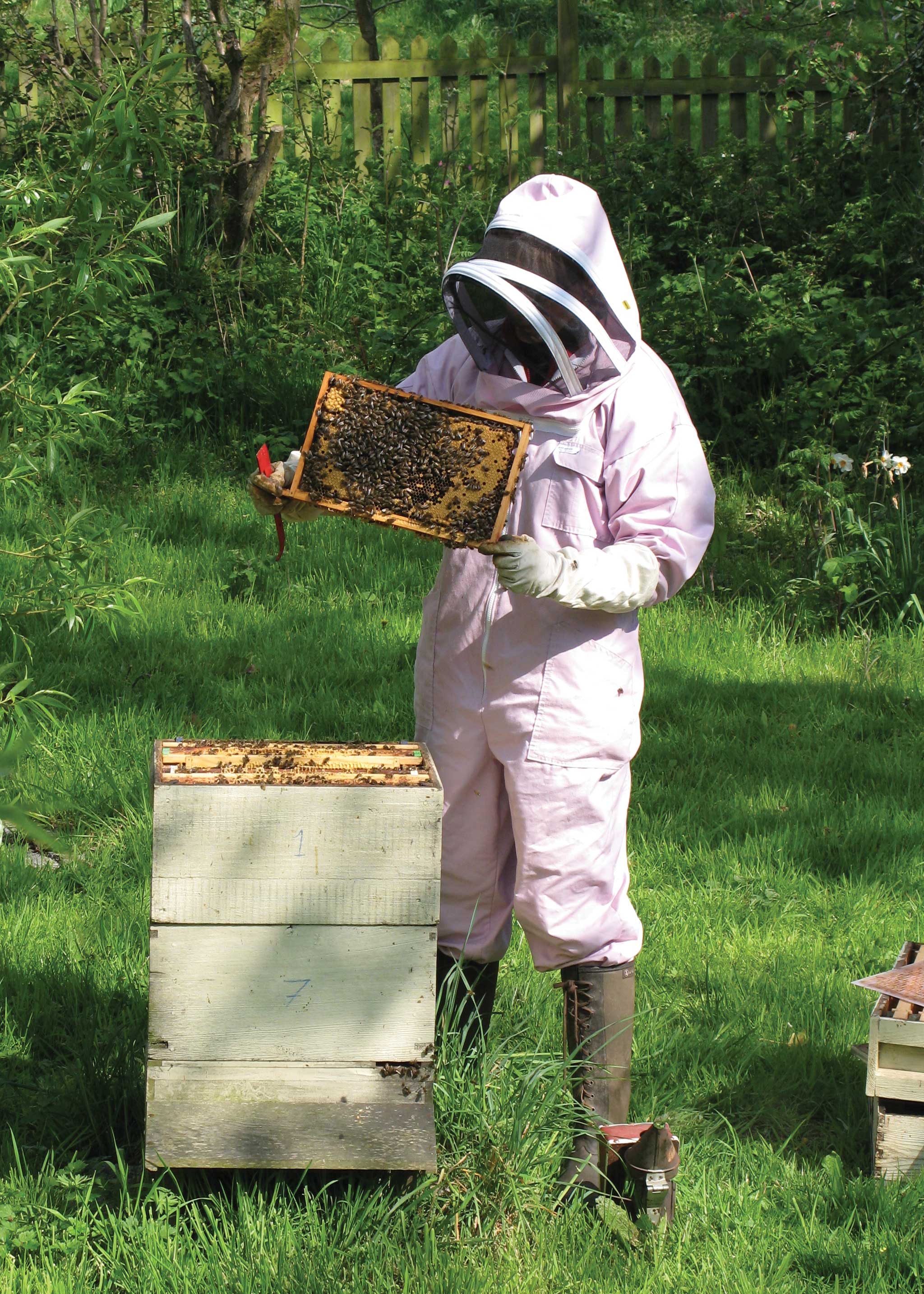
Beekeeping is growing in popularity – visit bbka.org.uk
for details of demonstrations in your area
Should I keep my own honeybees?
Beekeeping has seen a surge in popularity over the last decade as more people realise the importance of supporting bees and seek new ways to be self-sufficient. There are few restrictions to taking up the hobby, but it’s important that you know what you are doing and can provide a healthy environment for the bees.
Before taking things any further, make sure your family and neighbours are supportive and not allergic to bee-stings, and attend as many practical bee demonstrations as you can. These demonstrations will be organised by your local beekeeping association, details of which can be found via the British Beekeepers Association.
You will need enough space for the hives and the bees’ flight paths. Urban beekeeping presents more issues than in rural areas, due to there being less flowers and people living more densely, so seek advice on the suitability of your garden.
In terms of commitment, beekeeping is seasonal so the amount of time involved varies, from about an hour tending a colony per week in summer, to equipment maintenance in winter. Be prepared to spend around £800 initially on equipment, a beekeeping course, and the bees themselves.
If you are able to keep bees, it can be a highly rewarding and fun hobby – to say nothing of all that delicious honey you’ll get to harvest.
More on bee-friendly gardening
